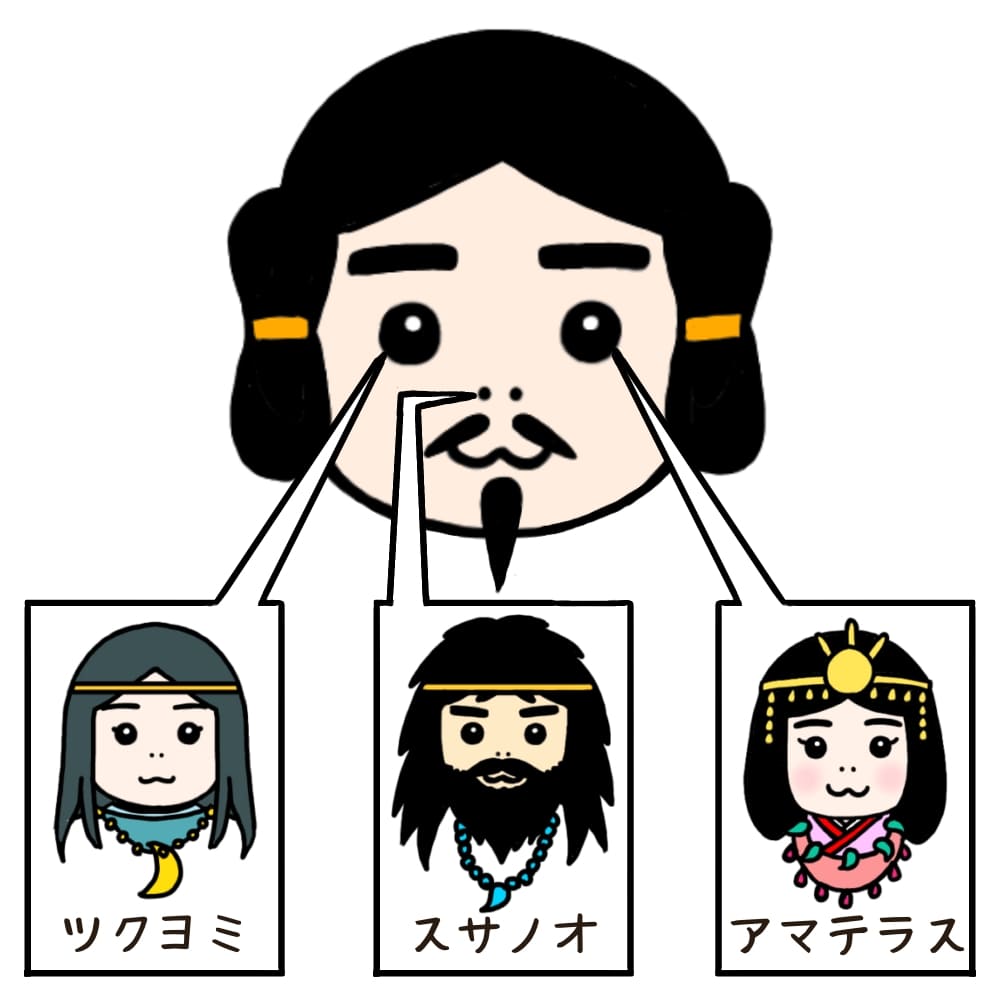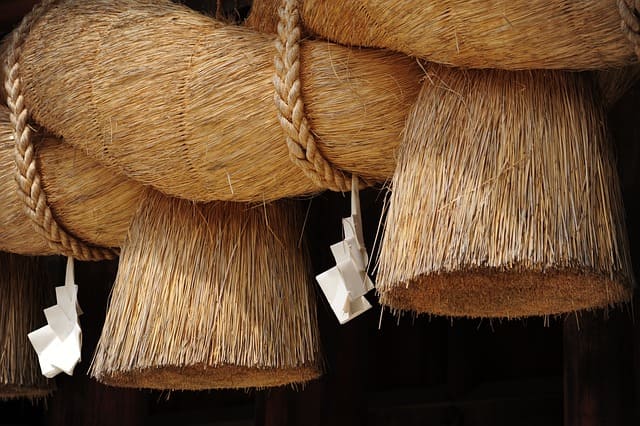Susanoo-no-Mikoto, often called Susanoo, is one of the most iconic deities in Japanese mythology. Known as the storm god, he’s famous for his wild personality, dramatic confrontations, and heroic deeds, especially the epic battle against the eight-headed serpent Yamata-no-Orochi. But who exactly is Susanoo? How was he born? What was his family like? And where can you still find traces of his legend today? Let’s explore the fascinating life and legacy of Susanoo-no-Mikoto.
How Was Susanoo Born?

Susanoo is the son of the primordial gods Izanagi and Izanami, who are credited with creating the islands of Japan. According to Japanese mythology, Susanoo was born when Izanagi cleansed himself after visiting the underworld. From his nose came Susanoo, while his sister Amaterasu, the sun goddess, was born from his left eye, and Tsukuyomi, the moon god, from his right eye.
If you are interested in the story of Izanagi and Izanami, check the article below.
While his siblings each received grand responsibilities—Amaterasu to rule the heavens and Tsukuyomi the night—Susanoo was assigned the seas. However, Susanoo was not content with his role. His rebellious nature and deep longing for his late mother, Izanami, caused endless turmoil.
Susanoo’s Family Ties

Susanoo is part of a divine trio with his siblings Amaterasu and Tsukuyomi. The three are often depicted as having complex relationships, with Susanoo’s behavior frequently clashing with Amaterasu’s calm and orderly demeanor. Despite their differences, their stories intertwine in key moments of Japanese mythology.
Why Was Susanoo Banished?

Susanoo’s chaotic tendencies were apparent from a young age. Overwhelmed by grief and longing to reunite with his deceased mother, Izanami, he wept uncontrollably. His crying was so loud and disruptive that it shook both the heavens and the earth. Fed up with Susanoo’s tantrums, his father Izanagi finally banished him from the heavenly realm.
Before leaving for earth, Susanoo decided to visit his sister Amaterasu in Takamagahara (the High Plain of Heaven) to say goodbye. However, his arrival caused great alarm. Amaterasu, suspicious of his intentions, armed herself and prepared for confrontation. Although Susanoo initially managed to convince her of his peaceful intentions, his subsequent behavior proved otherwise.

Susanoo wreaked havoc in the heavenly realm—trampling rice fields, throwing animal carcasses, and even hurling a skinned horse into Amaterasu’s sacred weaving hall. This final act shocked one of Amaterasu’s maidens so deeply that she lost her life.

Distressed and disgusted, Amaterasu hid herself in a cave called Amano-Iwato, plunging the world into darkness.
This event not only showcased Susanoo’s wild side but also marked a major turning point in his story, as it led to his complete exile from heaven.

If you want to know about Amaterasu more,
please check the article below.
The Legend of Yamata-no-Orochi

After his banishment, Susanoo descended to the earthly land of Izumo. There, he encountered an elderly couple, Ashinazuchi and Tenazuchi, who were crying uncontrollably. They explained their tragic story: the monstrous serpent Yamata-no-Orochi, with eight heads and eight tails, had devoured seven of their eight daughters. Now, only their youngest daughter, Kushinada-hime, remained, and they feared she would soon be next.
Moved by their plight, Susanoo devised a plan to defeat the serpent and protect Kushinada-hime. He first transformed her into a small comb and placed her in his hair to keep her safe. Then, he prepared an elaborate trap: he set up eight barrels of strong sake around the serpent’s lair.
When Yamata-no-Orochi arrived, it was drawn to the scent of the sake. The serpent drank greedily, emptying all the barrels and soon falling into a drunken stupor. Taking advantage of its vulnerability, Susanoo unleashed his sword and sliced the serpent into pieces.

As he cut through the serpent’s tail, Susanoo discovered a magnificent sword within it. This blade, later known as the Kusanagi-no-Tsurugi (Grass-Cutting Sword), would become one of the three sacred treasures of Japan. Susanoo presented the sword to his sister Amaterasu as an offering of reconciliation, symbolizing the mending of their fractured relationship.
Susanoo’s Life After the Battle

Following his victory over Yamata-no-Orochi, Susanoo married Kushinada-hime and settled in Izumo. Together, they had many descendants, some of whom are said to have played important roles in Japanese mythology and history. Susanoo’s transformation from a chaotic god to a protector of the people is a central theme in his story, highlighting his growth and redemption.
Susanoo and Kagura Performances

The tale of Susanoo’s battle with Yamata-no-Orochi is celebrated in traditional Japanese performing arts, particularly kagura (sacred Shinto theater). The dramatic reenactments of his heroic deeds continue to captivate audiences, keeping his legend alive in modern times.
Official website of Iwami Kagura
Shrines Dedicated to Susanoo

Many shrines across Japan are dedicated to Susanoo, honoring his contributions and legendary feats. Some notable examples include:
- Izumo Taisha [Sogano yashiro] / Shimane Prefecture: A major shrine closely associated with Susanoo and his family.
- Yasaka Shrine / Kyoto: A popular destination for those seeking protection and blessings from Susanoo.
- Susa Shrine / Shimane Prefecture: Named after Susanoo, this shrine preserves his legacy as a storm god.
Conclusion: The Enduring Legacy of Susanoo
Susanoo-no-Mikoto’s story is one of transformation and redemption. From his early days of chaos and rebellion to his heroic defeat of Yamata-no-Orochi, Susanoo’s life reflects themes of struggle, growth, and the importance of protecting others. His tales continue to be celebrated in Japanese culture, inspiring both traditional performances and modern storytelling. Whether you’re exploring Japanese mythology for the first time or revisiting its timeless legends, Susanoo’s story offers a fascinating glimpse into the heart of Japan’s ancient beliefs.

If you are interested in Japanese culture, you may love these games!
Let’s play!

Yes! Let’s play!






Comments